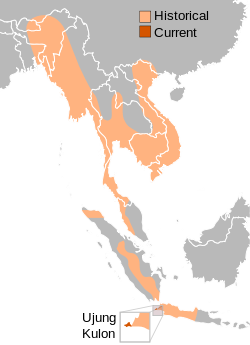
A recent trip to South Africa clearly showed the Breaking The Brand team that very few people understood the nature of the demand or the users of genuine rhino horn. This is obviously very concerning since the South African government appears to be actively pursuing a trade legalisation agenda and they are creating risk-benefit models for pro/anti trade decisions based on incomplete information.

Significantly, not enough people are asking the right questions: “Whilst we know that horns can be harvested for sale, are these the rhino horns that the wealthy users, driving the poaching of wild rhinos, will want to buy? Are farmed horns a substitute product for horns from wild rhinos to the primary user groups?” BTB’s research has always indicated a farmed product is not seen as a substitute product by the wealthy Vietnamese elite who can afford to buy genuine, wild rhino horn. They are interested in the wild ‘product’ and so while the demand remains the poaching will continue.
So we started thinking: If the users REALLY wanted farmed rhino horn why haven’t the demand countries farmed their own? Let’s think about agricultural sector in Viet Nam.
The Farming Sector
(Extracted from web site Rural Poverty Portal: The agriculture sector in Viet Nam accounts for more than 22 per cent of GDP, 30 per cent of exports and 52 per cent of all employment. The growth in agricultural output contributed greatly to improved household income, as roughly 70 per cent of the Vietnamese population is engaged in agricultural activities.
So we know that the Vietnamese people know how to farm!
Also from the article: The country’s poorest rural people generally have small plots of low-quality land or are landless, and their opportunities for off-farm employment are scarce. The poorest people live in remote villages in upland areas, with limited access to transportation and social interaction. Rural poor people have limited access to productive resources and basic financial services such as credit and savings. The poorest people in Viet Nam depend mainly on forest resources for a livelihood (they constitute only 13 per cent of the population but account for almost 30 per cent of poor people. They are also people living in remote upland areas. The regions with the highest relative poverty rates include the north-west, north-central, central highlands, central coast and north-east.
So we also know that there are regions where poverty is high that would benefit from farming a high value commodity.

So, if like some prominent South Africans we look at rhinos as a commodity to farm, is it a commodity that could be farmed in Viet Nam and in these poorer regions? When you look at the historic range of the Javan rhino (see map) it certainly appears that it could thrive in this region of the world. Its historic range covers pretty much all of what is Viet Nam today. So we know that rhinos could thrive in this region including areas where poverty is an issue. Instead, wild rhinos have been poached to extinction in Viet Nam.
The Politics
So let’s think about the politics in Viet Nam, a communist country that is following a rapid development path similar to China. When a country is on this trajectory a key concern of government, given the communist ideology, is inequality. If the government permits too large an inequality to build will that cause discontent and de-stabilise the government?
This is particularly a concern for communist party officials in poorer areas, who look for ways to ensure their constituents benefit from the economic growth of the country. Given there is mounting evidence that the government is concerned about rising levels of inequality, wouldn’t they jump at the opportunity to encourage farming a high-value product in their areas? So evidence shows that communist governments are likely to invest in areas of poverty to ensure inequality doesn’t become too disproportionate.
The Timeframe for Legal Trade Decision
In recent months there has been an emerging rumour, and it makes sense, that since the CITES 2016 is in Cape Town, the South Africans will not risk the almost certain politically embarrassing defeat of a legalised trade request in their own country. As a result the rumour goes that they will not put this request to the 2016 meeting, but will wait until the next meeting in 2019. If legalisation of trade gets a yes in 2019, in practical terms this would mean another 3 years until 2022 before it gets started. So we know that if the Vietnamese buyers REALLY wanted farmed rhino horn, the Vietnamese government has another 7 or so years to build up a domestic industry.
So let’s review, we know:
- Vietnamese people know how to farm.
- There are regions where poverty is high that would benefit from farming a high value commodity.
- Rhinos could thrive in this region including areas where poverty is an issue.
- Evidence shows that communist governments are likely to invest in areas of poverty to ensure inequality doesn’t become too disproportionate.
- The Vietnamese government has another 7 or so years to build up a domestic industry.
Given all this, together with the ever increasing local demand and the high value of rhino horn why isn’t it being farmed in Viet Nam? Mmm, let me think – could it be that the users don’t want a farmed product????
Over the last couple of years many people have told me that a substitute product for rhino horn already exists in Viet Nam. For those people who can’t afford rhino horn for traditional medicine use they buy pangolin scales to treat the same medical conditions. As a result, these same people have jokingly said “Farmed rhinos have a better chance of saving pangolins from extinction in the wild than saving rhinos from extinction in the wild” But that’s another story.
Combined Farming/Re-wilding Strategy
Now I know in discussing this that there are very few Javan rhinos left in the world. But there are several species that have been successfully brought back from the brink of extinction from just a handful of animals. So the other question is, given that there are many in the conservation sector who are offering some level of support to the legalisation of trade, would the conservation sector support the re-introduction of the Javan rhino into Viet Nam as long as there was a combined farming/re-wilding proposal?
These are the views of writer: Dr. Lynn Johnson, Founder, Breaking the Brand
